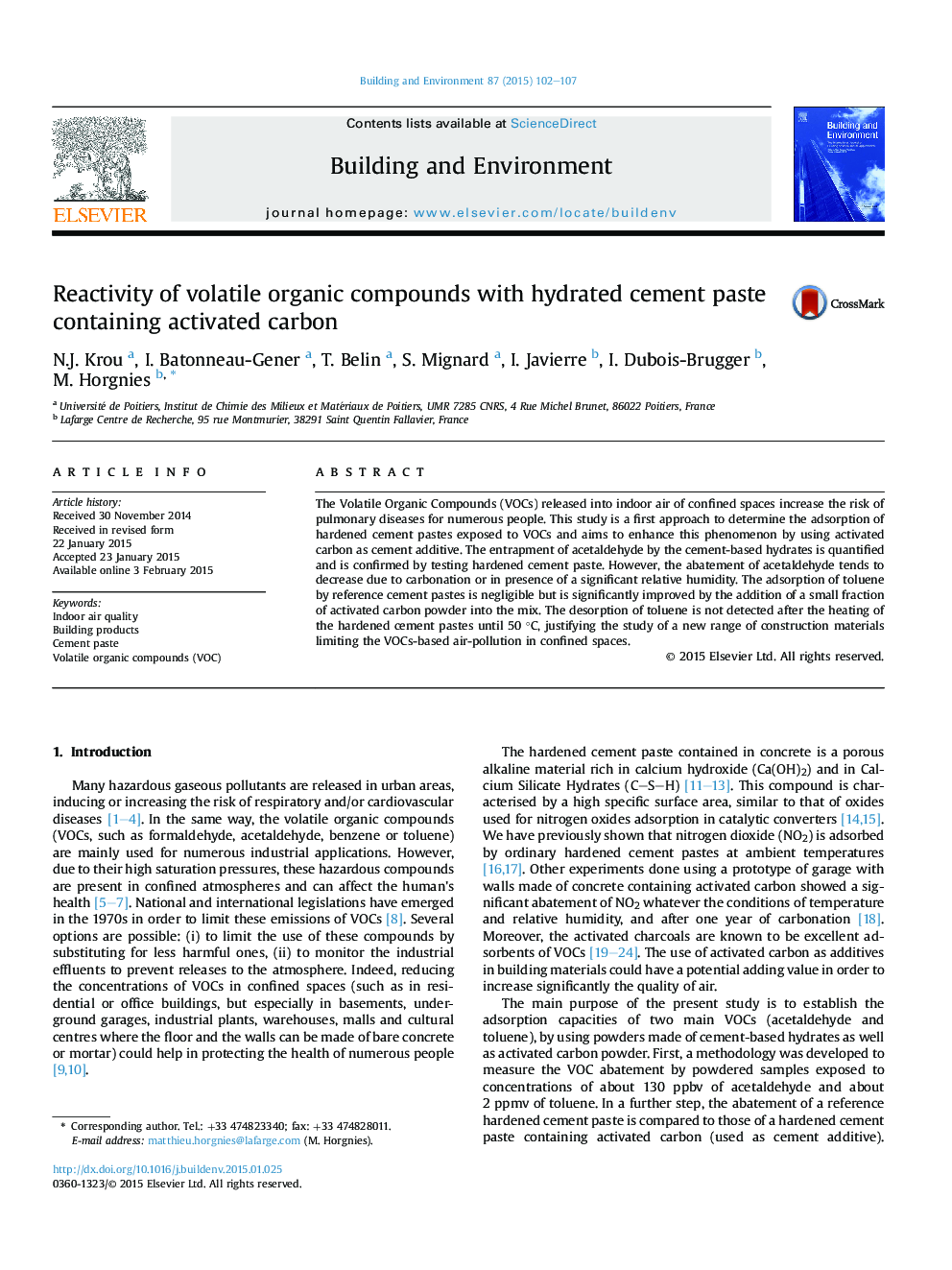| Article ID | Journal | Published Year | Pages | File Type |
|---|---|---|---|---|
| 248023 | Building and Environment | 2015 | 6 Pages |
•Reactivity between acetaldehyde and main cement-based hydrates is established.•The entrapment of acetaldehyde by cement paste decreases in presence of CO2.•Hydrated cement paste containing activated carbon can capture toluene.•No significant desorption of toluene from activated carbon is detected until 50 °C.
The Volatile Organic Compounds (VOCs) released into indoor air of confined spaces increase the risk of pulmonary diseases for numerous people. This study is a first approach to determine the adsorption of hardened cement pastes exposed to VOCs and aims to enhance this phenomenon by using activated carbon as cement additive. The entrapment of acetaldehyde by the cement-based hydrates is quantified and is confirmed by testing hardened cement paste. However, the abatement of acetaldehyde tends to decrease due to carbonation or in presence of a significant relative humidity. The adsorption of toluene by reference cement pastes is negligible but is significantly improved by the addition of a small fraction of activated carbon powder into the mix. The desorption of toluene is not detected after the heating of the hardened cement pastes until 50 °C, justifying the study of a new range of construction materials limiting the VOCs-based air-pollution in confined spaces.
